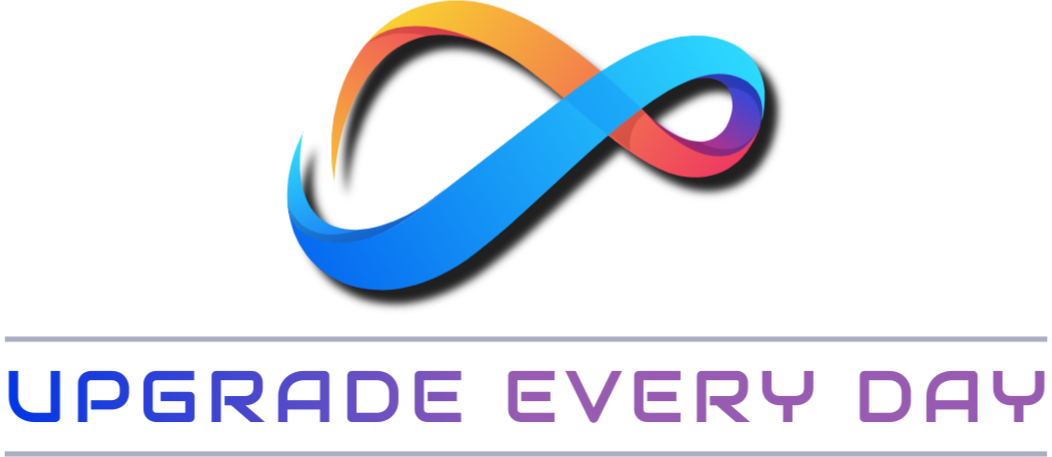Did you know on-page optimisation boosts your site’s visibility and ranking on SERPs? It does! By using smart on-page SEO tactics, your web content becomes more relevant and appealing. This helps attract both search engines and users.
On-page SEO lets you control many elements. These include web content optimisation, metadata, keyword research, image improvement, linking, and designing for users. Optimising these areas can lift your site’s rank. It brings more people to your site naturally.
In this article, I’ll walk you through on-page SEO’s main parts. I’ll also share tips to apply these methods on your site. Let’s get started!
Key Takeaways:
- On-page optimisation massively boosts your site’s visibility and SERP rankings.
- Factors like web content, metadata, and image optimisation are key in on-page SEO.
- Good keyword research and usage make your site more relevant to searches.
- Optimising meta tags, headers, and images helps search engines read and index your content better.
- Content that meets your audience’s search intent improves user experience and SEO success.
What is On-Page SEO?
On-page SEO is key for better website ranking and visibility on search engines. It improves a website by using different strategies. These include keyword use, creating top-notch content, and optimising meta tags.
It’s all about making your website’s pages better for both search engines and people. With on-page SEO, you make your site more visible and higher-ranked. This means more people can find your site easily.
Creating content that matters to your audience is a big goal. This means finding the right keywords through research. Then, you use these keywords in your content, meta tags, and descriptions. This helps your site show up in search results for those terms.
On-page SEO also improves your site’s technical setup. This means using header tags rightly to make content easier to read. Also, making images better by adding alt tags and reducing their size can speed up your site.
By using on-page SEO well, your website can attract more visitors. This helps your site be more successful online.
Key Components of On-Page SEO
On-page SEO has key parts that help your website get seen more. By working on these parts, your content becomes better for search engines and users. It makes your website’s content more relevant and meaningful.
High-Quality Content
Good content is central to on-page SEO. It means making articles, blog posts, and web content that your audience finds useful. When your content is valuable and interesting, you keep visitors coming back. This boosts your site’s rankings.
Keyword Optimisation
Keywords are also vital for on-page SEO. Do thorough research on keywords and use them wisely in your content, meta tags, and headers. But remember, don’t overdo it with the keywords. It’s crucial to use them naturally.
Meta Tags
Meta tags like title tags and meta descriptions are key. They give search engines and users quick info about your page. Use keywords in your meta tags and write interesting descriptions. This way, more people will click on your site.
Header Tags
Using header tags correctly is important for SEO. They help search engines get what your content is about. This makes your content easier to find and rank. Good headers also make your site easier to read and nicer to visit.
Image Optimisation
Many people forget to optimise images, but it’s important for SEO. Labeling and compressing images make your site faster and nicer to use. Also, using alt tags with keywords helps search engines understand your images better. This makes your content more accessible.
Focus on these on-page SEO parts to make your website do better. You’ll get seen more in search results and give visitors a great experience.

Real-World Application of On-Page Optimisation
Real-world websites benefit hugely from on-page SEO techniques. These include content enhancement, keyword research, meta tags, header tags, and optimised images. By using these strategies, you can increase your website’s search rankings and make it more user-friendly.
First, improving your site’s content is key. Regular updates keep your content fresh and relevant to your audience. This attracts organic visitors and encourages them to keep coming back.
Keyword research is vital for on-page optimisation and SEO. Identifying and integrating relevant keywords helps search engines understand your site. This improves how your site matches user searches.
Meta tags and descriptions are essential. They represent your content and lure users to your site. Good meta tags boost your site’s organic traffic by upping click-through rates.
Using header tags correctly improves user experience and SEO. Headers like H1, H2, and H3 help both users and search engines navigate your content. Proper headers enhance both usability and SEO.
Image optimisation is crucial for SEO. Fast-loading, well-labeled images enhance your site. Don’t forget to use keywords in the alt attribute for better search engine context.
On-page SEO techniques are key to optimising your site. They boost search engine rankings, increase organic traffic, and improve user experience. Implementing these strategies can significantly enhance your site’s visibility and success.
The Importance of Search Intent in On-Page SEO
Knowing what users are searching for is key in on-page SEO. People search with specific goals in mind. These goals can be to find information, compare products, find a website, or buy something. By aligning your content with what your audience wants, you make your site more relevant. This improves both the user’s experience and your site’s ranking.
Informational intent is when users want to learn something. They seek detailed content that answers questions or solves problems. For this, you can create guides, tutorials, or informative posts.
“When designing your on-page SEO strategy, it is crucial to understand the search intent of your audience. By providing valuable and informative content that aligns with their informational intent, you can attract relevant traffic and establish your website as a reliable source of information.”
Commercial investigation happens during the research or comparison stage of buying. Users look for information on products or services before buying. Creating product comparisons, reviews, or case studies can help with this intent.
Navigational intent is when users have a specific site or page in mind. They may be searching for a certain brand or resource. To help these users, make sure your site is easy to navigate. This helps users find exactly what they’re looking for quickly.
Transactional intent means users are ready to buy or sign up. They want direct actions like purchasing a product or subscribing to a service. For these users, ensure your pages are optimised for sales. Include clear calls-to-action and make the buying process simple.

Importance of Content Quality in On-Page SEO
On-page SEO hugely values content quality. Google looks for websites that show experience, expertise, authority, and trustworthiness (E-E-A-T). High-quality content that is easy to read and provides value is essential.
This improves user experience and sets my website as a go-to for valuable information. I aim to exceed my audience’s expectations with content that also boosts my website’s search engine visibility. This draws more visitors, fuelling the site’s success.
Great content is more than just writing good articles. It involves delivering value, ensuring readability, and enhancing the user experience. I want visitors to get helpful information that meets their needs. This keeps them coming back for more.
Quality content offers relevant, accurate, and current information. It brings unique insights and solutions to my readers. By doing this, I become a trusted name in my field and gain my readers’ trust and loyalty.

The Power of Value
I’m dedicated to giving my audience something meaningful. This can be informative articles, detailed guides, useful tips, or new insights. It adds value to their lives.
Offering real value builds trust with my readers. They’re more likely to share my content, link to it, and keep coming back. This boosts my site’s visibility and credibility, leading to better search engine positions and more visitors.
Readability Matters
Keeping content readable is vital. I know my readers might be busy or easily distracted. So, I focus on making content clear, concise, and simple to understand.
I use headings, subheadings, and lists to organise the content. I avoid complex jargon, opting for straightforward language. By ensuring readability, I make my content appealing, encouraging visitors to return.
| Benefits of High-Quality Content | Key Elements |
|---|---|
| Improved search engine rankings | Expertise |
| Increase in organic traffic | Authority |
| Establishment of trust and credibility | Trustworthiness |
| Higher user engagement and satisfaction | Value |
| More social shares and backlinks | Readability |
Making great content is worth the effort. It boosts my site’s visibility and attracts more visitors. It also makes for a better user experience. By providing valuable and readable content regularly, I become a trusted source. This earns me a loyal following that always wants more.
Summing Up
On-page SEO is vital for better search engine rankings and user experience. It involves improving content quality, using the right keywords, and structuring HTML well. These steps make your website more engaging and easy to use for everyone.
Using on-page optimisation makes your site more visible and relevant. This attracts more visitors from search engines and makes users happy. By fully using on-page SEO, your website can reach its full success online.
On-page SEO isn’t a one-time task. It needs regular check-ups and updates. Keeping up with new SEO trends and enhancing your site’s SEO will put you ahead of others. This means better rankings in search engines. Ultimately, it leads to more people visiting your site and happier users.
FAQ
What is on-page SEO?
On-page SEO makes your website more visible and rank higher in search results. It involves improving parts of your site you directly control. This includes quality content, keyword use, meta tags, headers, and image optimisation.
What are the key components of on-page SEO?
The main parts of on-page SEO are quality content, the right keywords, and well-used meta tags. Headers, like H1 to H3, and optimised images also play a big role. They help search engines understand your site better, making it more user-friendly.
How can I apply on-page SEO techniques to my website?
Start by updating your site with top-notch content regularly. Research and use important keywords throughout your site. Make sure meta tags and headings reflect your content well to draw users in.
Organise your content clearly using headers. Label and optimise your images for quicker loading times. This way, both search engines and visitors find your site appealing.
Why is search intent important in on-page SEO?
Search intent matters because it shows why users search for something. They might want information, to compare products, find a specific site, or buy something. Knowing this helps you tailor your content to meet their needs.
This improves your site’s user experience and search ranking by making your content more relevant and valuable.
How does content quality impact on-page SEO?
Great content boosts your site’s E-E-A-T – expertise, authority, and trustworthiness. Google looks for these to rank sites. High-quality, readable content enhances user experience and establishes your site as a trusted resource.
This attracts more visitors and can improve your search ranking. Always focus on creating valuable content for your audience.
Why is on-page SEO important for website success?
On-page SEO is critical for higher search rankings and better user experience. It involves improving content, using keywords well, and proper site structuring. This makes your website more compelling and accessible.
Effective on-page SEO increases your site’s visibility and appeal to both search engines and users. It’s key to unlocking your website’s potential for success online.





